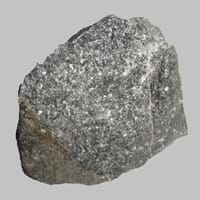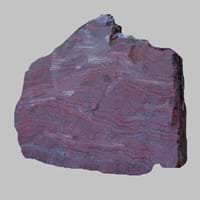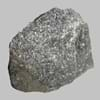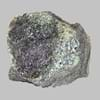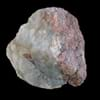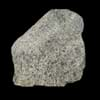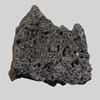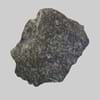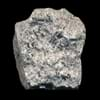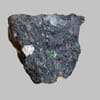andezyt i Banded formacji żelaza
Definicja
Definicja
andezyt jest ciemna, drobnoziarnista, brązowe lub szarawe pośrednia skała wulkaniczna, która jest powszechnie spotykane w lawie
banded formacji żelaza są charakterystyczne jednostki skał osadowych, które są prawie zawsze prekambryjsko wieku
Historia
Pochodzenie
Ameryka Północna
Australia Zachodnia, Minnesota
Odkrywca
Nieznany
Nieznany
Etymologia
z Andów, gdzie znajduje się w obfitości
od procesu formacyjnego
Klasa
skały magmowe
skały osadowe
Podklasa
wytrzymała skała, hard rock
wytrzymała skała, średnia twardość skały
Rodzina
Grupa
wulkaniczny
nie dotyczy
Inne kategorie
drobnoziarnista skała, nieprzezroczysta skała
gruba drobnoziarnistych skał, nieprzezroczysta skała
Tekstura
Tekstura
Aphanitic do Porphyritic
banded, krata
Kolor
niebiesko - szary, szary, różowy, żółty
czerwony, rudo brązowy
Konserwacja
jeszcze
mniej
Trwałość
trwały
trwały
Wodoszczelność
Nie
Nie
Odporny na zarysowania
Tak
Tak
odporny plamy
Tak
Tak
odporny na wiatr
Nie
Nie
kwas kwasoodporne
Tak
Nie
pojawienie się
matowa i miękka
warstwowe, banded, żyłkami i błyszczące
Wykorzystuje
Architektura
Zastosowania wewnętrzne
kruszywa dekoracyjne, kafelki podłogowe, domy, dekoracja wnętrz, kuchnie
kruszywa dekoracyjne, domy
Zastosowania zewnętrzne
budynki biurowe, dachówka
kostka brukowa, budynki biurowe
Inne architektury zastosowania
ograniczenie
ograniczenie, Osełki
Przemysł
Przemysł budowlany
kostki brukowej, kruszywa budowlane, dla kruszywa drogowego
jak kamień wymiar, wykorzystywane do podłogi, stopnie schodów, parapetów i granic.
Przemysł medyczny
jeszcze nie używany
jeszcze nie używany
zastosowania starożytności
artefakty, pomniki, rzeźba, małe figurki
artefakty
Inne zastosowania
Zastosowania komercyjne
pamiątkowe tablice, tworzenie grafiki
jako probierz, markery cmentarz, tworzenie grafiki
rodzaje
rodzaje
icelandite
Algoma typu, Lake Superior typu Superior, typu i Taconite
cechy
ogólnie szorstka w dotyku, wysoka zawartość krzemionki, jest jedną z najstarszych skały
jest jedną z najstarszych skały
Znaczenie archeologiczne
zabytki
używany
jeszcze nie używany
słynne pomniki
Middle of the Earth in Ecuador
nie dotyczy
Rzeźba
używany
Jeszcze Found
Znani Rzeźby
Dane niedostępne
nie dotyczy
piktogramy
nieużywany
nieużywany
petroglify
nieużywany
nieużywany
figurki
używany
Jeszcze Found
skamieniałości
nieobecny
teraźniejszość
Formacja
formacja
andezyt jest drobnoziarniste skały magmowe, które tworzy, kiedy magma jest wybuchł na powierzchnię i krystalizuje szybko.
Otoczonego taśmą warstwy żelaza są utworzone w wodzie morskiej, gdy tlen jest uwalniany przez fotosyntetycznych cyjano-bakterii. Następnie łączy się z rozpuszczonego żelaza, tworząc cienką warstwę pasami formacji żelaza na dnie oceanu.
Kompozycja
Zawartość minerałów
amfibol, apatyt, biotyt, skaleń, granat, hornblade, ilmenitu, magnetyt, plagioklaz, piroksen, cyrkon
krwawień, magnetyt, kwarc
compound zawartość
dwutlenek krzemu
Fe, Tlenek żelaza (III), dwutlenek krzemu
Transformacja
metamorfizm
Tak
Nie
Rodzaje metamorfizmu
Pogrzeb metamorfizm, cataclastic metamorfizm, kontakt metamorfizm, hydrotermalne metamorfizm, wpływ metamorfizmu, metamorfizmu regionalnego
nie dotyczy
Zwietrzenie
Tak
Tak
Rodzaje wietrzenia
wietrzenie biologiczne, wietrzenie chemiczne, wietrzenie mechaniczne
wietrzenie chemiczne
Erozja
Tak
Tak
Rodzaje erozji
erozji chemicznej, erozja wybrzeża, lodowiec erozji
erozja wybrzeża, erozja wietrzna
Właściwości
Właściwości fizyczne
Twardość
7
5.5-6
Wielkość ziarna
Bardzo drobnoziarnisty
duża i gruba drobnoziarnisty
Pęknięcie
nierówny
nierówna, łupliwy lub muszlowy
Smuga
biały
biały
Porowatość
mniej porowate
bardzo porowatym
glazurować
szklisty
ziemisty
Wytrzymałość na ściskanie
225,00 N / mm2
7
Niedostępne
Łupliwość
niedostępne
niedoskonały
twardość
1,1
1,5
Środek ciężkości
2.5-2.8
5.0-5.3
Przezroczystość
Opaque
półprzezroczysty nieprzezroczystą
Gęstość
2.11-2.36 g / cm3
Niedostępne
Właściwości termiczne
Specyficzna pojemność cieplna
2,39 kJ / kg K
2
3,20 kJ / kg K
1
Odporność
odporna na ciepło, odporna na ciśnienie, odporna na ścieranie
odporna na ciepło, odporne na uderzenia, odporna na ciśnienie, odporna na ścieranie
Rezerwaty
Depozyty w wschodnich kontynentach
Azja
Indie, Indonezja, Japonia, Nepal, Korea Południowa
Chiny, Indie, Iran, Irak, Oman, Rosja, Arabia Saudyjska, Tajwan, Tajlandia, Wietnam
Afryka
Egipt, Etiopia, Maroko, Namibia, Afryka Południowa, Tanzania
Kenia, Maroko, Afryka Południowa, Tanzania
Europa
Austria, Finlandia, Niemcy, Włochy, Rumunia, indyk, Zjednoczone Królestwo
Austria, Francja, Grecja, Włochy, malta, Polska, Portugalia, Serbia, Hiszpania, Szwecja, Zjednoczone Królestwo
Pozostałe
Jeszcze Found
Grenlandia, Mid-Atlantic Ridge
Depozyty w zachodnich kontynentach
Ameryka Północna
Meksyk, USA
Kanada, Meksyk, USA
Ameryka Południowa
Argentyna, Boliwia, Chile, Kolumbia, Ekwador, Peru, Wenezuela
Boliwia, Brazylia
Depozyty w Oceanii Kontynentu
Australia
Nowa Południowa Walia, Nowa Zelandia, Zachodnia australia
Nowa Południowa Walia, Queensland, Południowa Australia, Zachodnia australia
|
||
|
||
|
